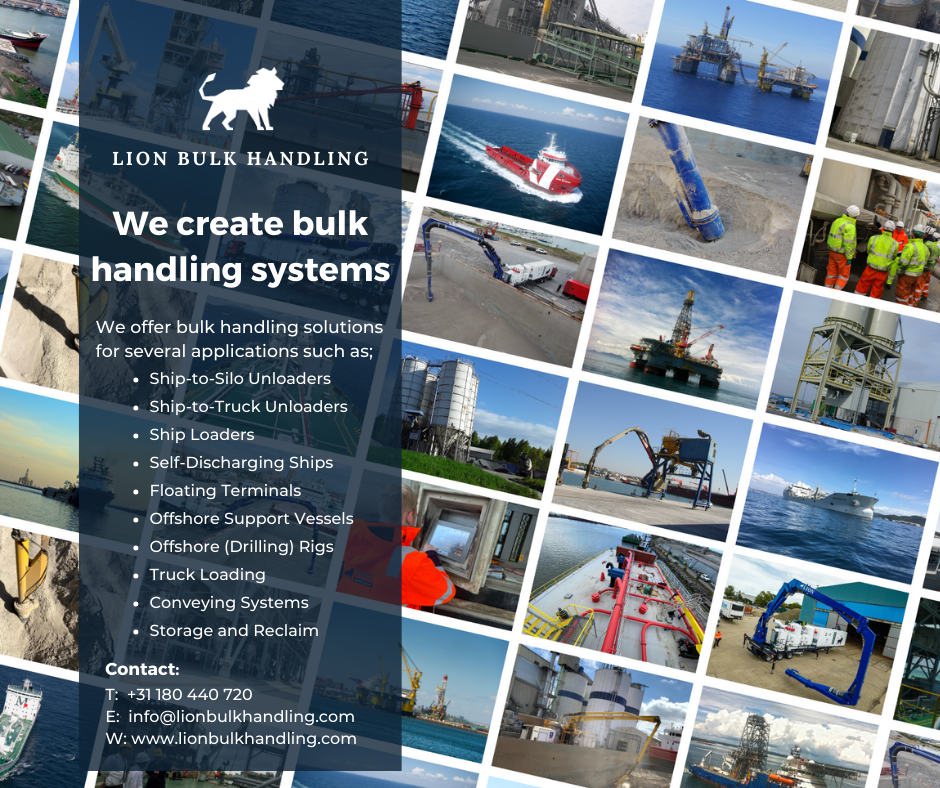Offshore Re-Loader Tank System Advantages from A to Z

Efficiency is critical in the dynamic world of offshore drilling. Therefore, we would like to share how a double re-loader system can revolutionize operations on offshore rigs with its advantages from A to Z!
Dry Bulk Management:
🚀 Boost Productivity: With a double re-loader system, offshore rigs can significantly increase the capacity and efficiency of your bulk handling operations. Automating the loading and unloading process minimized downtime and increased capacity and inventory control.
💡 Enhanced Safety: Safety is always a top priority in offshore operations. A double re-loader system reduces safety risks and minimizes the risk of accidents and injuries. It provides a safer working environment for crew members, ensuring peace of mind while maximizing productivity.
💰 Cost Savings: By streamlining your dry bulk management (and also your drilling fluid management) operations, a double re-loader system helps reduce operational costs on offshore rigs. The double re-loader is an ideal choice because it conveys more precise information about the mud mixing system and reduces maintenance costs.
🌐 Global Reach: Offshore drilling operations span the globe, often in remote and challenging environments. A double re-loader system offers versatility and dust-free operations on rigs worldwide, which is better for the crew’s health and the environment.
Ready to take your dry bulk handling for offshore drilling operations to the next level? Discover all the advantages of a double re-loader system from A to Z below and unlock new levels of efficiency and productivity for your Rig!

Advantages from A to Z:
a. Two (2) atmospheric hoppers equal four (4) regular pressure vessels in capacity.
b. Absolutely dust-free operation.
c. Fully automated and merged to offshore Rig central computer system.
d. Complete inventory control for dry bulk materials.
e. Weight reduction compared to existing P-tank systems.
f. Reduced loading time from Offshore Support Vessels through better venting with less back pressure on the receiving tank.
g. Tanks empty completely when discharged.
h. Tanks can be outfitted with load cells on the storage tanks or re-loader system to weigh the exact amount of conveyed materials.
i. Higher conveying rates with less compressed air required.
j. Discharge configuration is 2,7 Bar (40 psi) at 15 m3/min (550 cfm).
k. Less piping and fewer valves are required compared to P-tank systems.
l. Dust containment is built into the storage tank, eliminating some vent piping and expensive dust collector tanks that require operator interface to move collected dry bulk/powder back to storage tanks.
m. Higher conveying rates can be reached with Barite, Bentonite and Cement, up to 120 tons per hour.
n. Eliminates requirements associated with pressure storage tank inspections and certification.
o. Low skill is required to operate the control system while maintaining total discharge capacity and no possibility of human errors; remote access is available.
p. When a single valve fails to close upon loss of power or emergency shutdown, it can be operated automatically or remotely, individually at the control panel and locally, due to manual operation.
q. The system is designed with redundancy. The blowers and vacuum pumps can be cross-connected on either storage tank.
r. Materials are delivered into the piping system to the receiving surge tank or directly to an Eductor Shear Mixer; when the weight loss in the re-loader occurs equal to the amount of material needed, the discharge is closed on the re-loader, then all material is cleared from the storage tank inner connecting piping to the final destination, resulting in very
accurate measurement and end-use.
s. Graduated sight glasses and level transmitters readily visible to the operator give accurate level indication while filling or discharging the storage tanks as a backup to load cells or level sensors.
t. The flow rate is controlled from the re-loaders through proportioning valves to set the desired delivery rate (lbs per minute or cubic feet)
u. The large surface area of the self-cleaning filters mounted on the storage tanks assures dust-free operations and maintenance-free service; this design allows dust-free operations while continuously returning the collected dry bulk material (cement, barite, bentonite) to the Storage tank as it is intergraded into the storage tank.
v. All surfaces are coated with a 2 part application of primer and Marine epoxy; the storage tanks are not subject to velocity flows, so the paint system lasts much longer than conventional P-tank systems.
w. The re-loader tanks are much safer; i.e. should the need arise to enter them, the fear that someone will open a pressurized tank or discharge a pressurized tank onto the deck when opened with pressure on them is eliminated. The only time the storage tanks see pressure is during loading.
x. Piping does not clog as the air-to-product ratio is controlled during discharge, and the piping is cleared each time a re-loader is discharged.
y. System layouts can be configured to meet the needs of the designer; increased capacity for storage or reduced footprint and weight may be selected as desired.
z. Because the storage tanks are atmospheric tanks, should the need arise to repair the tanks, it can be done by non-certified personnel with material normally found on the shelf of the Rig.

Lion Bulk Handling Solutions
In conclusion, investing in efficient bulk handling systems is paramount for businesses looking to streamline their operations and maximize productivity. Whether you’re in the manufacturing, cement, offshore or maritime industry, optimizing your material handling processes can lead to significant cost savings and improved efficiency.
If you’re interested in learning more about how bulk handling systems can benefit your business, don’t hesitate to reach out to us. Our team of experts is here to provide you with tailored solutions and answer any questions you may have. Contact us today for more information and take the first step towards enhancing your operations.


